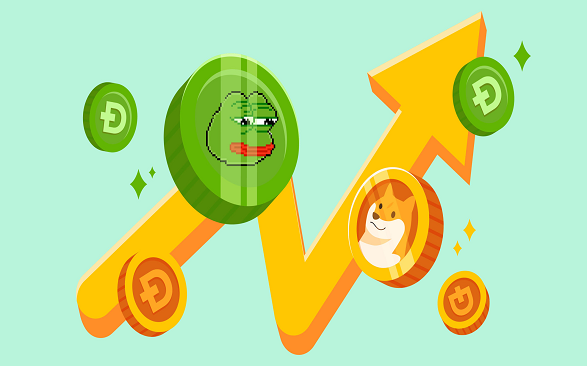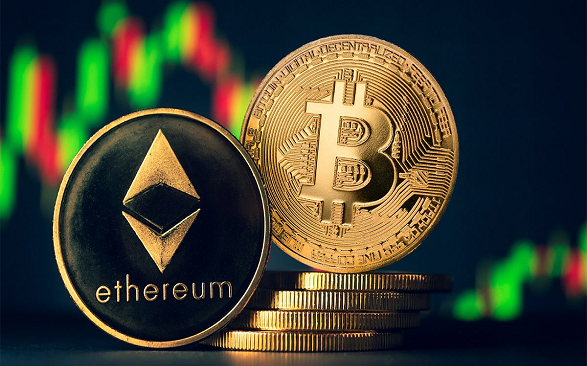by Senator Ihenyen
When Vitalik Buterin, Ethereum Founder, launched the Ethereum project in 2014, he imagined a blockchain-powered platform that would democratize and decentralize access to funding for “important public projects”.
Today, 10 years down the lane, Buterin believes that memecoins are “quite the opposite”. Should memecoins be destroyed, or can memecoins be saved?
In this CAB’s Crypto Viewpoint, we take a trip with Buterin to the up-and-down world of memecoins.
Memecoins “often seem to just go up and down in price and contribute nothing of value in their wake”, Buterin stated. This makes Buterin feel uneasy. Buterin, fun and jokes apart, obviously does not think these memecoins are healthy for the crypto industry. Or are they?
In his recent post on the subject matter, Buterin wrote:
Ten years ago, two weeks before the Ethereum project was publicly announced, I published this post on Bitcoin magazine arguing that issuing coins could be a new way to fund important public projects. The thinking went: society needs ways to fund valuable large-scale projects, markets and institutions (both corporations and governments) are the main techniques that we have today, and both work in some cases and fail in others. Issuing new coins seems like a third class of large-scale funding technology, and it seems different enough from both markets and institutions that it would succeed and fail in different places – and so it could fill in some important gaps.
Armed with such powerful technology, Buterin imagined that various public-interest projects would be launched and funded by people, based on what they really cared about. In his words, “People who care about cancer research could hold, accept and trade AntiCancerCoin; people who care about saving the environment would hold and use ClimateCoin, and so forth. The coins that people choose to use would determine what causes get funded.” That was the big picture on the canvass of Buterin’s mind.
Well, apparently, not everyone ended up choosing the kind of coins in Buterin’s good soul.
Today, it’s a different picture in the crypto space.
Memecoins appear to have memed the crypto industry, making it seem both a bag of jokes, and sometimes a tale of crooks. Buterin acknowledged how memecoins started with Dogecoin back in 2015 and how “dog coins” were very popular during the 2020-21 season.
Buterin is however not mad with dogs. And neither with cats. This time, he is concerned that memecoins are “are heating up again, but in a way that is making many people feel uneasy, because there isn’t anything particularly new and interesting about the memecoins.”
For all it’s worth, some people just want to have fun or get rich overnight, even if at other people’s expense. This is what Buterin, a builder to the core, finds too expensive to laugh about. No, it’s just not funny.
“In fact, often quite the opposite: apparently a bunch of Solana memecoins have recently been openly super-racist. And even the non-racist memecoins often seem to just go up and down in price and contribute nothing of value in their wake.”
And boy are people so upset with these memecoins! Buterin cited two posts as reproduced below:
And this very very unhappy post by Polynya whom Buterin described as a “long-time Ethereum philosopher”:
Related: Memecoins dominate crypto trading on decentralized exchanges.
Anyway out of the memecoin conundrum?
“One answer to this conundrum”, Buterin advised, “is to shake our heads and virtue-signal about how much we are utterly abhorred by and stand against this stupidity. And to some extent, this is the correct thing to do.”
But Buterin, how about peeps who just want to catch fun with memes? No scamcoin or shitcoin intended. To this, Buterin has 3 major recommendations:
- Introduce charity coins.
Acknowledging that some people simply love memecoins because that’s how they catch fun in the digital space, Buterin considered that we could ask ourselves a question:
If people value having fun, and financialized games seem to at least sometimes provide that, then could there be a more positive-sum version of this whole concept?
Buterin recommends that if memecoins must be a thing in the crypto space, they should be reasonably meaningful; they should serve a worthy cause. Of course, what’s “meaningful” or “worthy” is largely subjective. Buterin’s point however is that memecoins for only fun sake may not have everyone laughing for long.
Charity coins. “Among the more interesting of the coins that I’ve seen are coins where a large portion of the token supply (or some ongoing fee mechanism) is dedicated to some kind of charity”, Buterin said.
It feels like there is an unclaimed opportunity here to try to create something more positive-sum and long-lasting. But ultimately, I think even that would create something fundamentally limited, and we can do better.
We can certainly do better. If you are the type that being Mother Theresa is going to make the world think you need therapy, consider becoming Robin Hood.
Read also: Shitcoins and Scam Coins: Understanding their similarities and differences
2. Embrace Robin Hood Games.
In principle, Buterin observed, people participate in memecoins because of the 3 reasons below:
- The value might go up.
- They feel democratic and open for anyone to participate.
- They are fun.
Now while projects could “siphon off a large percent of a memecoin’s supply to support public goods that people value”, Buterin doesn’t think this is ideal either. According to Buterin, running your charitable memecoin project that way may have participants thinking, rightly or wrongly, that they do not have anything to gain directly. Consequently, the value of the memecoin might not go up. Also, if the project is governed poorly, the participants will no longer feel that they are part of a democratic and open process. Eventually, that project will either lose steam or collapse altogether. I agree with Buterin. In community-based or community-powered projects—including memecoin projects—incentives are key to building sustainable projects. If you fail to incentivize the community to succeed together, you have invariably failed to disincentivize the community to take a walk at any opportunity. They either take that walk when the memecoin is just starting to ride on the tricky back of a bull run, or when the memecoin runs into a bear in the woods.
So to build a sustainable memecoin project, Buterin advises that you make a game. How? Here’s our Buterin puts it:
The answer for (iii) is simple: don’t just make a coin, make a game. But make an actually meaningful and fun game. Don’t think Candy Crush on the blockchain; think World of Warcraft on the blockchain.
You are not familiar with World of Warcraft? Prepare to descend beneath the surface of Azeroth to explore subterranean worlds full of hidden wonders, earn the trust of the new Earthen allied race, and face an ancient evil lurking in the darkness.
That is World of Warcraft. Certainly no candies there! In fact, you could be crushed!
3. Combine both charity coins and Robin Hood games.
For the best of two worlds, Buterin recommends that charity coins and games could be combined.
One of the features of the game could be a mechanism where players who succeed at some task can participate in voting on which charities the issued funds are distributed to.
Also, Buterin believes that if the goal of memecoins is really “to satisfy people’s desire to have fun, we should be making not simple copy-paste coins but rather more complicated and interesting games”. Also, “games that leave lower-income players in particular economically better off are more likely to leave their communities better than they came in.”
So if you are one of those memecoin founders or promoters who might already be thinking that Robin Hood was practically robbing Peter to pay Paul, Buterin’s point above isn’t that you build a pyramid. No. His point is this: Your memecoin project should empower people, not milk them.
Read also: Top 4 Safety Tips in Crypto Investment You Should Know
Any parting words, Buterin?
“I have zero enthusiasm for coins named after totalitarian political movements, scams, rugpulls or anything that feels exciting in month N but leaves everyone upset in month N+1.”
But memecoins help boost adoption, bringing new users to the crypto space, don’t they? Buterin doesn’t exactly think that solely “bringing in users” is good enough. After all, what many of these new users experience in the crypto space is best left untold!
“… I want to see higher quality fun projects that contribute positively to the ecosystem and the world around them (and not just by “bringing in users”) get more mindshare. At the least, more good memecoins than bad ones, ideally those that support public goods instead of just enriching insiders and creators. But also ideally, making games rather than coins, and making projects that people enjoy participating in.”
Read that as, offering real products and services, not just marketing blockchain technology.
Here’s My Best Part!
“If you have to be financially brutal on someone, be brutal on those who can handle it, but have a safety net to keep lower-income users protected and even try to make them come out better off than they came in.”
Read also: Understanding the Pros and Cons of Memecoins as an Investor
Senator Ihenyen is the Founding Editor, Crypto Asset Buyer (CAB) and Lead Partner at Infusion Lawyers where he heads the Blockchain & Virtual Asset Practice. He is the immediate former President of SiBAN, former General Secretary of Blockchain Industry Coordinating Committee of Nigeria (BICCoN), and General Secretary of Fintech Alliance Coordinating Team (FACT).
Discover more from Crypto Asset Buyer
Subscribe to get the latest posts sent to your email.




